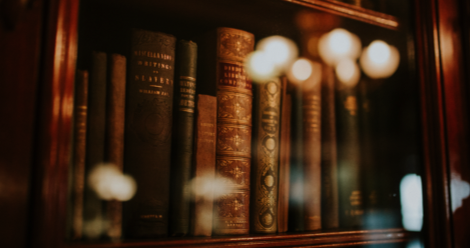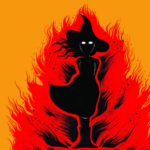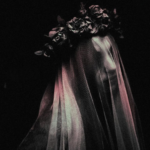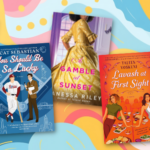
Who Jane Read, Who Read Jane: Austen’s Readers and Favorite Books
We’re celebrating Jane Austen on this, the day of her death, with a bevy of posts about her work and legacy. See all the posts here.
I’ve been studying the evolution of the bookworm. Although it’s hard to imagine, we bookworms haven’t always existed. There were reading addicts before books because scribes and monks loved words in the same way we do, but it took books and literacy to create a society where bookworms thrive. My interest in rabid readers got started years ago with The Information by James Gleick. This year I’ve been focusing on the nineteenth century when novel reading reached a kind of critical mass. Because 2017 is the 200th anniversary of Jane Austen’s death, I thought I’d research who Jane loved to read, and who might have loved reading Miss Austen before she died.
Jane Austen’s decade was the 1810s. She published four books while living, two were published the year of her death. All six came out during 1811-1817. She wasn’t a bestseller in her day, but she got a reasonable amount of praise and made a respectable amount of money. Her books were published anonymously. Sense and Sensibility by a Lady. Pride and Prejudice by the author of Sense and Sensibility, and so on.
Books were very expensive in her day. Authors and their fandoms were microscopic compared to the gigantic fame writers achieve today. Reading Women in the English Novel 1800-1900 by Merryn Williams and Dickens’ Fur Coat and Charlotte’s Unanswered Letters by Daniel Pool gave me a slight sense of how author fandoms evolved in the nineteenth century. Wildly popular novels did exist before 1800 like Robinson Crusoe and Gulliver’s Travels, but just how widely read were they in a society where the majority couldn’t afford books and were illiterate. Ironically, it was a time when girls weren’t educated, many of the novelists were women, and most of the readers might have been female.
Because Jane Austen essentially owns the early nineteenth-century English novel I thought I’d start with her in my quest to understand the beginning of popular writers and their fans. Jane is not the big bang of novel reading, but she was part of the inflationary period of our early reading universe. In fact, studying what Jane read suggests a much more happening reading era in the 1700s. That surprised me because few books from that century are read for fun today.
I’m amazed how much has been written about a woman who left so little biographical evidence. If only Goodreads and WordPress existed back then and we had Jane’s own words telling us what she loved about reading and what she knew about her fans.
Who Jane Read
Jane Austen read widely in the classics of her day, including the famous, Shakespeare and Milton, and the forgotten. Here are some of the popular books she probably read. The year given is the date of publication, not when Jane read those books. An asterisk denotes known favorites. Remember Jane lived from 1775-1817 and published between 1811-1817. Links are to free online editions.
- 1752 – Female Quixote by Charlotte Lennon
- 1753 – The History of Sir Charles Grandison by Samuel Richardson*
- 1778 – Evelina by Frances Burney
- 1782 – Cecilia; Memoirs of an Heiress by Frances Burney
- 1783 – Adelaide and Theodore, or Letters on Education by Madame de Genlis
- 1785 – The Task: A Poem, in Six Books by William Cowper*
- 1791 – The Romance of the Forest by Ann Radcliffe
- 1794 – The Mysteries of Udolpho by Ann Radcliffe
- 1796 – Camilla: A Picture of Youth by Frances Burney
How we know what Jane read is not precise. This information has been gathered over the centuries by a close reading of her novels and surviving letters. Reading her letters can be a slog but is the best way to understand the real Jane. I started reading her letters but quit when I realized I needed a good annotated version, which I can’t find. I bought The Complete Works of Jane Austen for the Kindle for $1.99 so I could just computer search for keywords in the letters.
What’s interesting is none of the books listed above are popularly consumed today. All are available online though. Sir Walter Scott was the Stephen King/J. K. Rowling of his day in terms of fans, but practically no one reads him anymore. Jane Austen achieved modest success in her lifetime, but she and Charles Dickens are now the most remembered English novelists of the nineteenth century.
I have read that Jane’s father bragged of owning 64 square feet of books, which could have been an 8×8 bookcase. George Austen was a clergyman, educated at Oxford, and his large parsonage doubled as a boys school. This is where Jane grew up as a child. Having access to a large library shaped Jane’s reading. She had little formal schooling, just two short stints at boarding schools for girls, which she disliked.
References
- Jane Austen: What books were on her reading list?
- Jane Austen’s Reading: The Chawton Years
- Allusions to Books and Authors in Jane Austen’s writings (most complete list)
Who Read Jane
Of course, Jane Austen’s most famous reader was the Prince Regent, the future King George IV. We get the labels Regency era and Regency romances because of him. Jane dedicated Emma to the Prince Regent but not without qualms.
It’s very hard to gauge who read Jane Austen in her lifetime. She had some short favorable book reviews and one very important one by Sir Walter Scott. Books were so expensive readers had to subscribe to circulating libraries. Novels were often published in 3-volumes which allowed three lenders to read one novel concurrently. Jane’s family is sometimes considered part of the upper-middle class, but they had money problems. Jane’s extended family probably owned a lot of books compared to the average person in England, but even they joined several circulating libraries to chase down the titles they wanted to read.
Wikipedia has the best summary of Jane’s modest critical success with its entry, “Reception history of Jane Austen.” “The Anonymous Jane Austen” let me know that Sense and Sensibility (1811) had an initial print run of 750 which sold out by 1813. That she was paid £110 for Pride and Prejudice. That Mansfield Park had a print run of 1,250 and made her £320, the most in her lifetime. That Emma had too large of an initial print run losing money for the publisher and making her little. If she had lived she hoped to make enough money to support her family.
Since books were often read by lending – either from friends or lending libraries we can assume a few thousand people read Jane in her lifetime. Wikipedia said, “Austen’s novels quickly became fashionable among opinion-makers, namely, those aristocrats who often dictated fashion and taste.” It also reported, “Despite these positive reactions from the elite, Austen’s novels received relatively few reviews during her lifetime: two for Sense and Sensibility, three for Pride and Prejudice, none for Mansfield Park, and seven for Emma. Most of the reviews were short and on balance favourable, although superficial and cautious.”
Because Jane’s brother was adopted by a well-to-do childless couple she had connections to upper-class book owners to borrow books. I’m not sure her fans had the access to the number of books she did. Even the yearly fees to circulating libraries cost more than what most English citizens of the day could afford. My guess from reading the biographies of Jane Austen is only the well-to-do and well-educated read her. Even newspapers from that time were expensive because England taxed them to control protests of the government. Journals were less expensive, but Jane lived before the advent of serial publication which made Charles Dickens such a huge success.
My impression from all my reading about Jane Austen is her readers were mostly women. She had male fans because men published and reviewed her books. Probably the literati of the day were mostly male. I say she had mostly female readers because I’ve read in the past that women were the majority of fiction readers at that time. And there were quite a number of women writers before Jane Austen, some have even said the majority of early novelists were women. I can’t document this belief right now because it’s from memories of reading books in the past. If it’s true, my guess is men took over the novel writing business when it became more profitable, and when males in large numbers took up reading for pleasure.
Jane Austen wrote realistic stories at a time when the sensational action tale was the norm. Austen made fun of such books in Northanger Abbey. I’m sure if her books had been affordable she could have been a bestselling author. Of course, there was a relationship to literacy. Over half the population couldn’t read. Bookworms had to be educated and somewhat affluent.
It’s almost impossible to count the biographies about Jane Austen. I used four different approaches searching for details that would give me a feeling of what living in 1817 was like and trying to imagine what how my book-minded personality would have fit in. The Tomalin book is the best current standard biography. Byrne takes a fascinating approach by writing about events and everyday objects in Austen’s novels and letters which describe the details around Jane Austen’s life. Pool takes a similar approach explaining the history, culture, and sociology around Jane. Ray is a past president of the Jane Austen Society of North America and has written an extremely handy guide that combines all these approaches.
All four books have their virtues and I ended up buying them all.
- Jane Austen: A Life by Claire Tomalin
- The Real Jane Austen: A Life in Small Things by Paula Byrne
- Jane Austen for Dummies by Joan Klingel Ray
- What Jane Austen Ate and Charles Dickens Knew by Daniel Pool
To get a visual feel for the times I rewatched a film version of each of Jane’s six classic novels. I saw books, home libraries, and even a bookstore. The libraries in the manor houses would have represented vast fortunes in books. The cottage in Sense and Sensibility where the Dashwoods lived looks something like the cottage at Chawton where Jane spent her final years. In the film, few books were shown. For now, that’s how I picture Jane Austen’s bookworm life.
Also In This Story Stream
- Blame Jane Austen for My Fanfiction Addiction
- 5 Contemporary YA Jane Austen Retellings
- Get Lost in Austen: 13 Adaptations for Jane Austen Fans
- Why EMMA is the Worst Jane Austen Novel
- 5 Excellent Jane Austen Comic Book Adaptations
- Giveaway: Jane Austen Penguin Clothbound Editions!
- From Pemberley to Trump Tower: Jane Austen Quotes Meet Trump Tweets
- The Queerness of Emma
- Literary Tourism: Jane Austen-Themed Destinations
- Don’t Dismiss Jane Austen as a Writer of “Silly Things”










